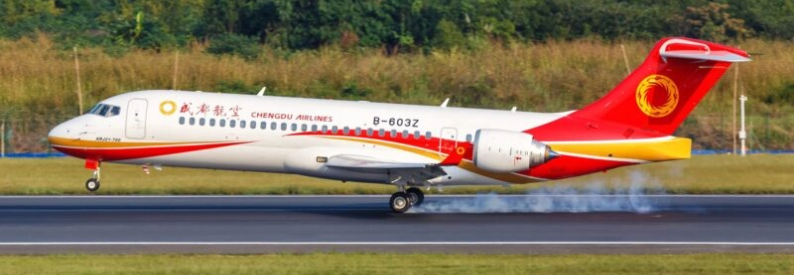US Lifts Engine Export Ban, Paving Way for COMAC Jet Production

The US government has approved the resumption of aircraft engine exports to China’s Commercial Aircraft Corporation of China (COMAC), easing trade restrictions that had impacted aviation cooperation between the two countries. On July 3, 2025, GE Aerospace received official clearance to begin shipping aircraft engines once again, according to sources cited by Reuters.
The move reverses export restrictions introduced in May 2025 when the US government, citing national security and competitive concerns, suspended licenses for the export of aviation technology to Chinese companies, including engines destined for COMAC’s aircraft programs. The suspension was part of a broader effort that included restrictions on semiconductor and chemical exports amid intensifying trade tensions.
With the latest decision, restrictions have been lifted on two key engine models: the LEAP-1C and the GE CF34. Both are essential to powering COMAC’s flagship aircraft programs—the C919 and C909, respectively. The engines are manufactured by CFM International, a joint venture between GE Aerospace and France’s Safran.
This development comes just days before the July 9 deadline of a 90-day truce agreement between the United States and China aimed at cooling a heated tariff conflict. That conflict escalated in April when the US imposed sweeping tariff hikes on dozens of countries, including China. In response, China announced its own steep tariff increases on US imports. By mid-May, both countries agreed to a temporary truce, reducing tariffs significantly and opening a window for renewed trade talks.
GE Aerospace’s return to the Chinese market marks a notable de-escalation in what had become one of the most sensitive areas of trade between the two nations—high-tech manufacturing. COMAC, which is developing commercial aircraft as an alternative to Boeing and Airbus, relies heavily on Western technology to build its planes. The temporary suspension of engine shipments had threatened to derail the company’s production timelines, especially for its C919, which is seen as a symbol of China’s ambitions in the commercial aviation sector.
Although neither the US Department of Commerce nor GE Aerospace has publicly confirmed the lifting of the restrictions, industry analysts view the change as a signal that the two nations are making progress in resolving their trade disputes, at least in key sectors. The restored licenses also suggest a possible continuation of US involvement in China’s growing aviation industry, despite geopolitical concerns.
With engine exports cleared once again, COMAC is expected to resume its production schedule with fewer disruptions, potentially accelerating deliveries of its narrowbody jets. The decision also restores confidence in CFM International’s ability to serve the Chinese market, which represents a significant portion of the global commercial aircraft demand in the coming decades.
Related News: https://airguide.info/category/air-travel-business/airline-finance/
